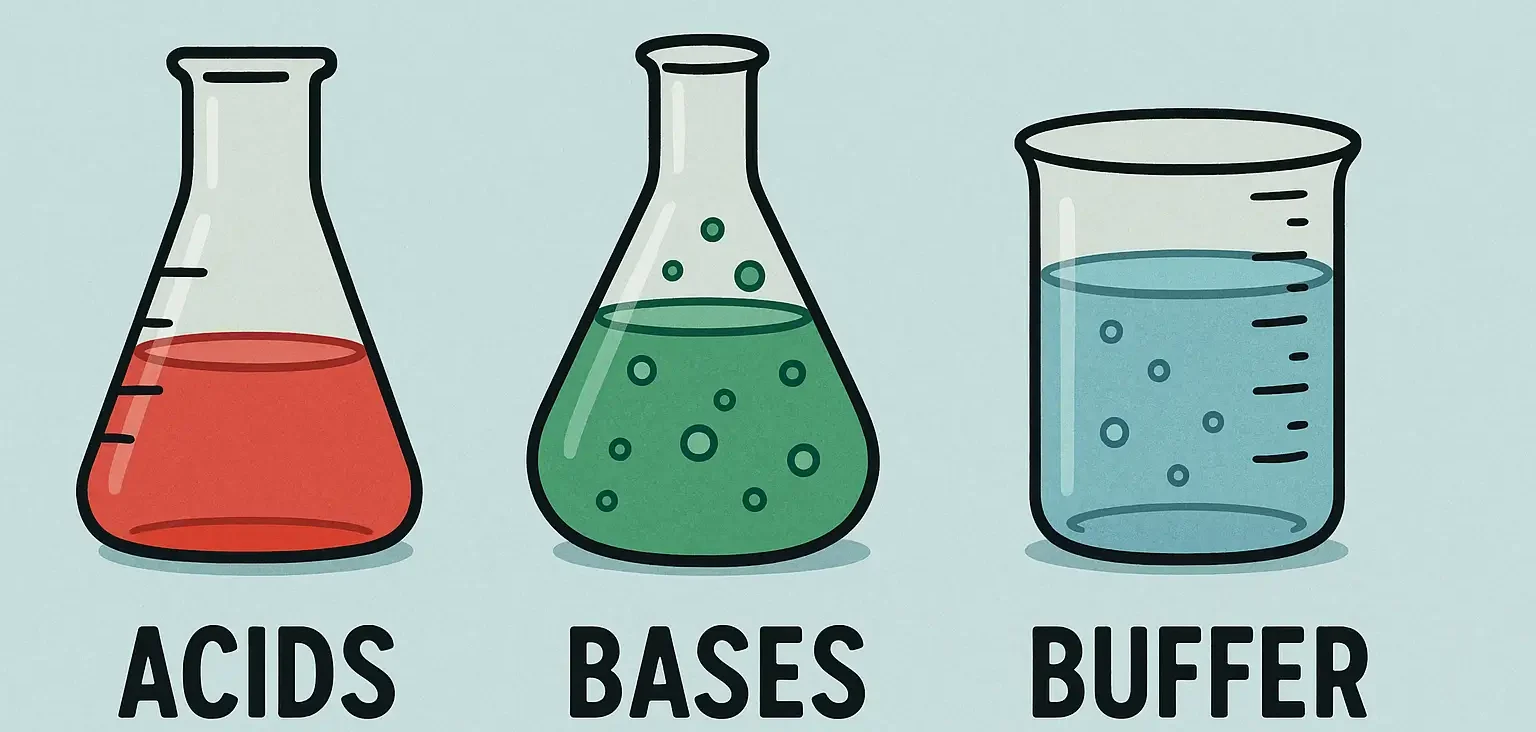Acids, bases and buffers are essential concepts in chemistry and play critical roles in various biological and industrial processes.
Acids:
- Acids are substances that donate hydrogen ions (H⁺) or protons when dissolved in water.
- They typically have a sour taste and can be corrosive to metals.
- Acids can be classified into two main categories:
This is a sample ad placement!
Strong Acids:
- These acids ionize completely in water, releasing all their hydrogen ions.
- Examples include hydrochloric acid (HCl), sulfuric acid (H₂SO₄), and nitric acid (HNO₃).
Weak Acids:
- These acids ionize only partially in water, releasing only a small fraction of their hydrogen ions.
- Examples include acetic acid (CH₃COOH), carbonic acid (H₂CO₃), and phosphoric acid (H₃PO₄).
This is a sample ad placement!
Bases:
- Bases are substances that accept hydrogen ions (H⁺) or donate hydroxide ions (OH⁻) when dissolved in water.
- They typically have a bitter taste, feel slippery, and can be corrosive to organic materials.
- Bases can also be classified into two main categories:
Strong Bases:
- These bases ionize completely in water, releasing all their hydroxide ions.
- Examples include sodium hydroxide (NaOH), potassium hydroxide (KOH), and calcium hydroxide (Ca(OH)₂).
This is a sample ad placement!
Weak Bases:
- These bases ionize only partially in water, releasing only a small fraction of their hydroxide ions.
- Examples include ammonia (NH₃), methylamine (CH₃NH₂), and pyridine (C₅H₅N).
Buffers:
- Buffers are solutions that resist significant changes in pH when small amounts of acid or base are added.
- They usually consist of a weak acid and its conjugate base, or a weak base and its conjugate acid.
- Buffers are essential for maintaining a stable pH in biological systems, industrial processes, and analytical chemistry.
For example, in biological contexts, the bicarbonate buffer system helps maintain a stable pH in blood:
This is a sample ad placement!
- The buffer consists of carbonic acid (H₂CO₃, a weak acid) and bicarbonate ions (HCO₃⁻, its conjugate base).
- When an acid is added, the bicarbonate ions react with the hydrogen ions to form carbonic acid, neutralizing the added acid and minimizing the pH change.
- Conversely, when a base is added, carbonic acid donates hydrogen ions, which react with hydroxide ions to form water, neutralizing the added base and again minimizing the pH change.
Thank you for reading from Firsthope's notes, don't forget to check YouTube videos!

